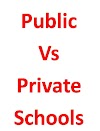Introduction
Etiquette refers to the overall communication, manner and way of
dealing and treating people. There are rules and expectation of people rely on
cultural and social norms and values supposed to be maintained in the
particular circumstances. Business etiquette is a very broad concept which
includes all the verbal and nonverbal communication, manner and ways of dealing
people for business purpose. Business Etiquette is a socially acceptable code
of conduct. It is highly desirable in business organizations. Business refers
to any formal activities where people involve in sales and purchases of goods
and services.
Importance of Business Etiquette
Business etiquette gives you many things. First of all, if you are
able to manage the professional etiquette, there is a bigger chance of getting
success in any kind of business because it helps to build rapport and many
other required things such as trust and loyalty.
Business etiquette develops your professional image in the
organization.
Business etiquette protects your personal security.
It protects others' feeling and emotion.
Business etiquette develops first good impression. As we know that
good impression is always highly demanding in any kind of businesses.
Etiquette encourages you to respect others which ultimately returns
to you from your business partner and customers.
It is also called the professional etiquette. The etiquette in
business can be categorized into various types.
Business etiquette automatically creates a professional and mutually
respectful environment where business communication becomes easier and clearer.
Business etiquette promotes kindness, consideration and humility. It
is because of etiquette, any kind of circumstances and conditions become comfortable
to the business people.
Types of Business Etiquette
a. Meeting Etiquette: While participating in meeting, the business
person should be in time. S/he has to put forward his viewpoint at the time
given to him/her. One has to be serious about the time of agenda discussion and
taking decision on that agenda.
b. Email Etiquette: The whole world business has been interlinked
with the information and technology nowadays. While writing email for business
purposes/formal purposes, the writer should consider many things such as the
message should be clear in subject matter as well as in the sentence structure.
It is less formal than letter even though it is used for business communication.
c. Dining Etiquette: The dining etiquette are almost similar all
over the world. We be punctual and offer seat and food for others before we
take our part and start to eat. In some eastern countries, people offer food
for the guests and eat after the guests eat the food. If people are offering
food for you in restaurant, you are suggested not to order very expensive food.
d. Telephone Etiquette: While talking on phone you should be brief
at one hand and on the other you should speak very clearly in a comfortable
speed of speaking. Talking on phone first time requires many professional
aspects such as you introduce yourself and asks for the person you want to
communicate. If somebody else receives the phone then you leave the message in
case the message is not too private.
e. Presentation Etiquette: Presentation looks like a piece of cake
but it is not the case. In business communication and dealing presentation
plays vital role. While presenting the ideas from the stage you should remember
some of the name of people who are on stage. While taking the name of the
people the senior comes before the juniors. The chairman of the program, chief
guests/special guests and other participants are referred before the presenter
moves to the subject matter.
f. Hand Shaking Etiquette: All the people nowadays shake their hands
in the first meeting. There are some people who often hug instead of shaking
hands. Namaste is said and done in majority parts of north India and Nepal.
Whatever the case and scenario, while shaking hand you should not hold
somebody's hand for a long time. You are suggested to smile and indicate your
confidence and respect to your visitor/partner.
d. Introduction Etiquette: Introduction etiquette is very important
because the first impression is for the last impression. It is said that people
can judge you in 30 seconds only about your economic condition, academic level,
sophistication and many more things. Interestingly, it is proved that people
take decision during 4/5 minutes of the first meeting.
e. Interview Etiquette: It is said that interview also resembles the
job interview after your selection from written test. Interview etiquette
encourages both the interviewer and interviewee to follow some of the basic
norms and standard which actually leads them to professionalism.
Benefits of Business and Corporate Etiquette
There are several benefits if you are able to manage the etiquette
based on the context and requirement. The benefits of business and corporate etiquette are listed as follows:
a. You can easily rapport build with your business
partner/customers.
b. It becomes easier to project yourself as professional and loyal
in front of your business partner.
c. It gives you confidence and sense of psychological security in
business.
d. Business etiquette helps you to upgrade the goodwill of your
business goods and services.
e. You will receive loyalty and trust from your customers and
partners.
f. Business etiquette helps to make your business long lasting and
it also create the healthy way of competition in the market.
g. It reduces conflict and misunderstanding in business.
Do's and Don'ts in business etiquette
Do
respect your business partner and customers but don'ts reveal the problems,
weakness and demerits of others because every man has his own problem in life.
Do
maintain friendly relationship with your entire staffs or coworkers but don'ts
teat your customers and staffs based on their post and designation because
everybody deserves respect and dignity in communication and business deal and
treatment.
Do
make your good first impression but don'ts think that relation will be improved
in the long course of time.
Do
make balance in both verbal and nonverbal communication but don'ts say one
thing but do another in business deal.
Do
give values to others' opinion/view/feeling but don'ts be bossy in discussion
and taking decisions.
Business Etiquette and Culture
The
term etiquette and culture are very much interrelated. As the definitions of
etiquette highlight that it is the communication, manner and behavior based on
social standard for social activities, a business person or professional should
arrange and operate the etiquette based on their cultural background and
practices. The way Japanese make eye contact is different with the way people
of the United States make eye contact. Here Japanese people do not like to make
eye contact with their seniors and teachers because in their culture it is the
symbol of disrespect whereas in the US, people understand it as the junior is
hiding something or telling a lie if s/he does not make eye contact during any
formal and informal dealings and affairs.
Iceberg Model and Business Etiquette
People
behave on the basis of many things which are covert like in an iceberg model of
cultural understanding. Human behavior and use of language is rely on so many things
which are not seen like in an iceberg. According to iceberg model the
behaviours and perception of the people are heavily based on perception,
attitudes beliefs and values which are indirectly based on climate, geography,
demographic and economics at one side and on the other are media, education,
ideologies and religion.
Obviously
it is important to understand iceberg model of culture for the better understanding
and handing of business etiquette because if you don't understand all those
things it is very challenging to deal with the people even though we practice
some of the globally popular model and style of business etiquette.
Conclusion
Business
etiquette is equally important both for the students of business and commerce
in one hand and on the other, it is also beneficial to the businessmen and
professionals. Many people believe business etiquette is a part of business communication
but it is not the reality. It rather incorporates the all the communication,
manner and behavior of the business people which simply maintain the standard of
the society. Various types of etiquette are required to maintain based on the circumstances
and situations.
References
Related Articles
Meeting Minutes: What, How & Why?
Memo: What, How & Why?
Letter Types: Formal Letters Versus Informal Letters










0 Comments